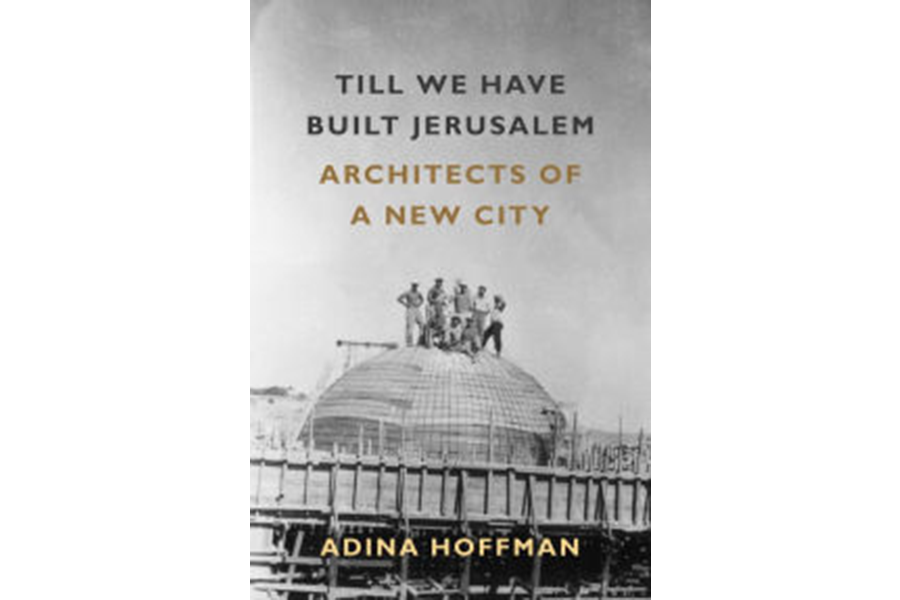'Till We Have Built Jerusalem' blends architecture, identity, and history
Loading...
Almost as soon as workmen broke ground for the foundations of an archaeological museum in Jerusalem in 1928, they were forced to halt construction. Buried beneath the proposed site of the museum was a large Roman and Byzantine graveyard. The city’s archaeological richness had interrupted efforts to house and display that same abundance.
Once these skeletons and their burial goods were excavated and catalogued, the building process resumed. But this would hardly be the last time that Jerusalem’s past intruded on its present plans. The so-called Museum of Tolerance, a $250-million project currently under construction in Jerusalem, sits directly above part of a cemetery that dates to the 7th century A.D. and holds the remains of some of the Prophet Mohammed’s companions. Despite controversy and international criticism, the project is still moving forward.
These are just two of many similar stories in Adina Hoffman’s elegant new book, Till We Have Built Jerusalem: Architects of a New City. A composite of biography, architectural and political history, and reportage, Hoffman’s engaging book illustrates the intricate interplay between architecture, identity, and history in this ancient and troubled city.
Each of the book’s three sections investigates the life and works of a Jerusalem architect active early in the 20th century. Her first subject is Erich Mendelsohn, a Jewish-German architect who called himself the “Oriental from East Prussia.” Before settling in Jerusalem, Mendelsohn mingled with the cultural elite in Germany and Europe in the 1920s. When he wasn’t designing expensive villas and buildings for high-profile clients, he spent free time sketching elaborate architectural fantasies as his wife played Mozart’s chamber music with Albert Einstein and other friends.
By the 1930s, however, his own interests and the increasingly anti-Jewish culture in Germany propelled him and his wife to Jerusalem. German nationalists had begun criticizing buildings they deemed insufficiently German in appearance, and they were particularly suspicious of structures that suggested the architectural styles of the Mediterranean or Middle East. In Palestine, placed under British mandate in the aftermath of World War I, architecture was also charged with political significance in the interwar period.
Many Zionist Jews moving to Palestine wanted a distinct national style of Jewish architecture to legitimize their goal of establishing a permanent Jewish state in Palestine. Mendelsohn built a variety of private and public buildings in Jerusalem, but his most ambitious project was probably the hospital complex on Mount Scopus. Because he admired and incorporated local styles of architecture, he often quarreled with Zionist patrons and observers who objected to such architectural pluralism.
Hoffman’s second subject is the British architect Austen St. Barbe Harrison, a retiring Englishman who was Chief Architect of Palestine’s Public Works Department under the British mandate. Harrison was a descendant of Jane Austen, and his private letters and papers sometimes show the subtle wit you might expect given such a pedigree: “I admire English people so much provided I am not mingled with them,” he wrote. A lover of the eclectic architectural styles that already coexisted in Jerusalem, Harrison borrowed freely from “Islamic tombs and crusader forts, Byzantine churches, Palestinian peasant houses, and even the Alhambra,” in designing his archaeological museum (the same one delayed by the discovery of a graveyard.)
The final architect Hoffman profiles is a ghostly figure named Spyro Houris. Though he’s credited as the architect of many residences and buildings throughout Jerusalem, scant details of his personal life survive. The story of this final section is largely the story of Hoffman’s sleuthing through various dusty archives during the violent summer of 2014. She watches as a crowd shouted insults at a young man holding a sign that says “I AM A JEW WHO DOESN’T HATE ARABS,” and reflects on the seemingly endless series of violent conflicts between Israelis and Palestinians in the modern Middle East.
Not much information about Houris ultimately emerges, but in Hoffman’s view he embodied a cosmopolitan blending of cultures that reflects the multiethnic, polyglot nature of Jerusalem itself. A Greek who spoke Arabic, he built for Muslim, Jewish, and Christian clients throughout the city in a versatile and lovely style. The contrast between Jerusalem of the early 21st and early 20th centuries is striking, and it’s hard not to share Hoffman’s melancholy nostalgia for that vanished era. She closes with a revealing parallel between Alexandria and Jerusalem: “Once the epitome of the most vibrant sort of pluralism and cosmopolitanism, Alexandria is for all intents and purposes now a monolingual, monocultural, monoreligious city, and one that’s far less for that. If Jerusalem’s rulers have their way, this city faces a similar grimly monolithic future."






